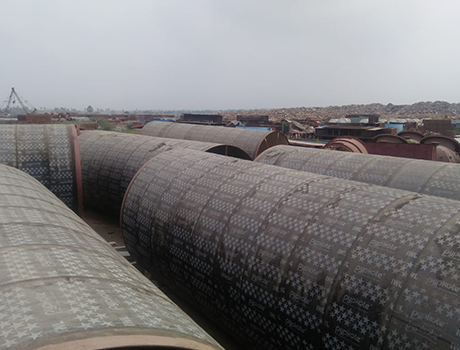How to Protect a Pipeline When It's Coating has Aged?
A pipe's exterior pipeline buried is exposed to the elements that could cause corrosion. At first, pipeline operators applied coatings on the exterior of their pipes prior to installation to avoid corrosion. These first coatings on pipes included tape wraps or wax, asphalt as well as coal tars. Coatings are the primary tool to shield a pipeline from corrosion from the outside, however, they are susceptible to deterioration due to the passage of time and other elements.
As time passes, a coating will wear down and become less durable due to stress in the soil and pipe movement, temperature fluctuations within the pipeline, as well as flooding or wet conditions. That is why most people use pypcoat. While these coatings have the potential to last for 20-30 years, many have outstripped this timeframe and are nearing or even exceeding 70 years old. The failures of coatings that have happened typically result from cracking or disbanding, sagging, and melting at higher temperatures.
Coatings are one of the primary tools to protect pipelines from external corrosion and if you do not want the same thing to happen to your pipes then use Cementitious Waterproofing during the installation. However, they are susceptible to deterioration due to aging and other causes While these coatings were designed with the potential to last for 20-30 years, the majority have outlived this anticipated service life and are now approaching or exceeding 70 years old. The failures of coatings that have happened typically result from disbandment, cracking or melting, or sagging due to the higher temperatures of the product. As the coatings on pipelines get older, they lose their protective qualities, including dielectric strength and elasticity, and may crack or break.
Evaluating a Pipeline Coating
Pipeline recoating using pypcoat is an established method to repair pipelines that have damaged coatings. It is considered to be the most effective solution for long-term coating repair. It is recommended when the coating is failing and cannot be sustained anymore.
Techniques for protecting coating conductance test the conductance of coatings (inverse of resistance to coating) on the sections of underground pipelines. They are also utilized to assess the general state of the coating. This test technique is only applicable to pipes coated with dielectric coatings. Conductance tests are conducted every time significant changes in P/S voltages and requirements for current use occur. Particular areas with high conductance levels in a particular section of the pipeline signify an aging coating. To get information for conducting calculations of coatings P/S potentials that are interrupted and readings of the pipeline's current are collected at predetermined intervals. The soil's resistance can affect the measurements of coating conductance and must be considered when evaluating the portion of a pipeline coating.

Comments
Post a Comment